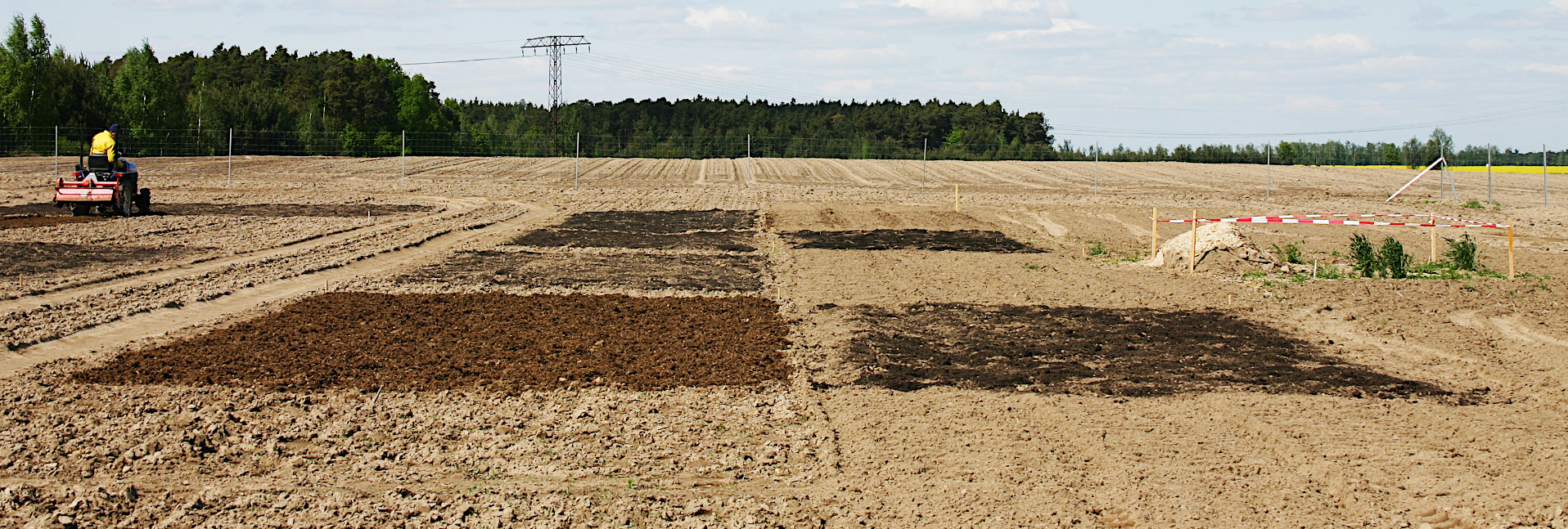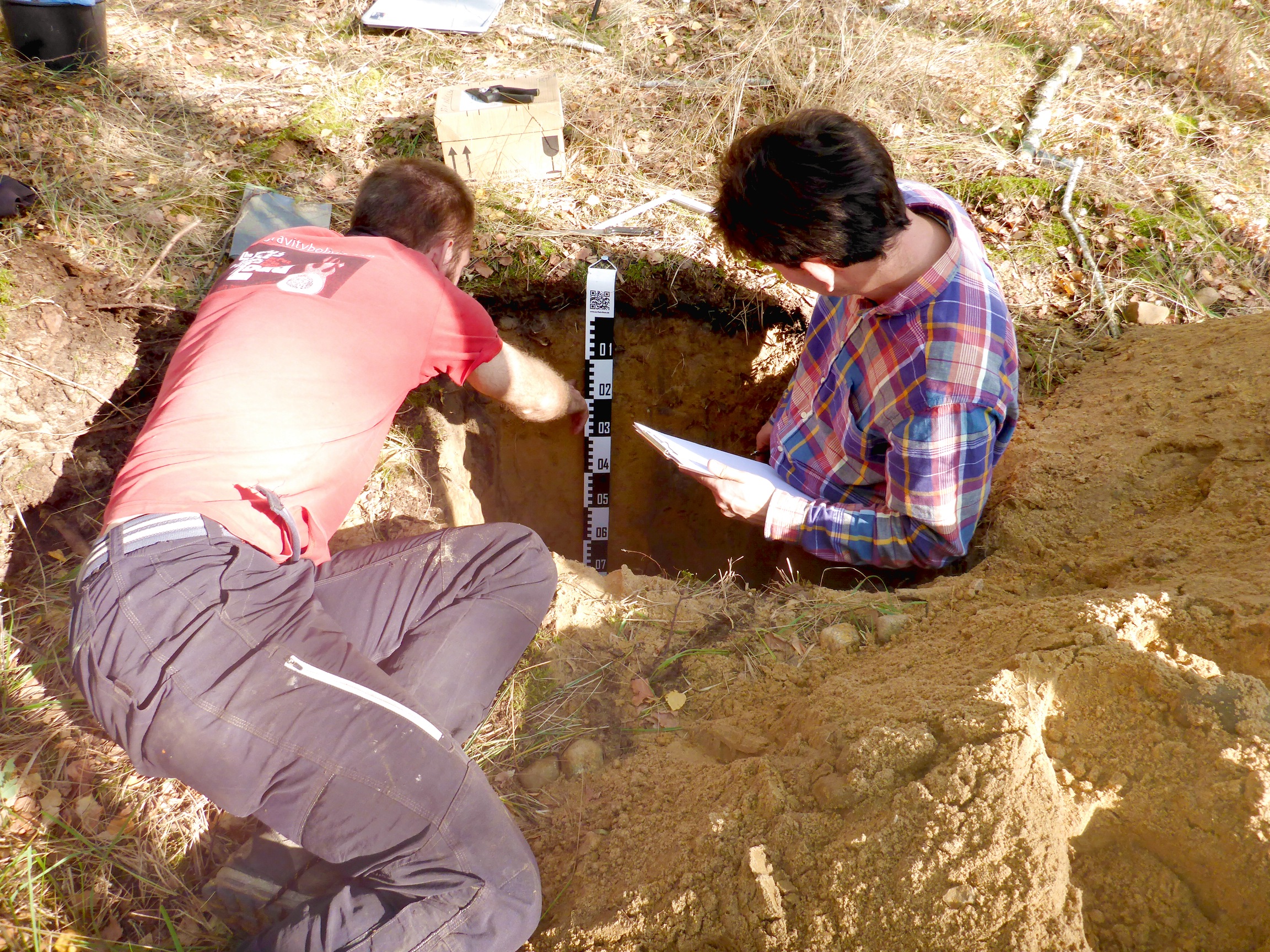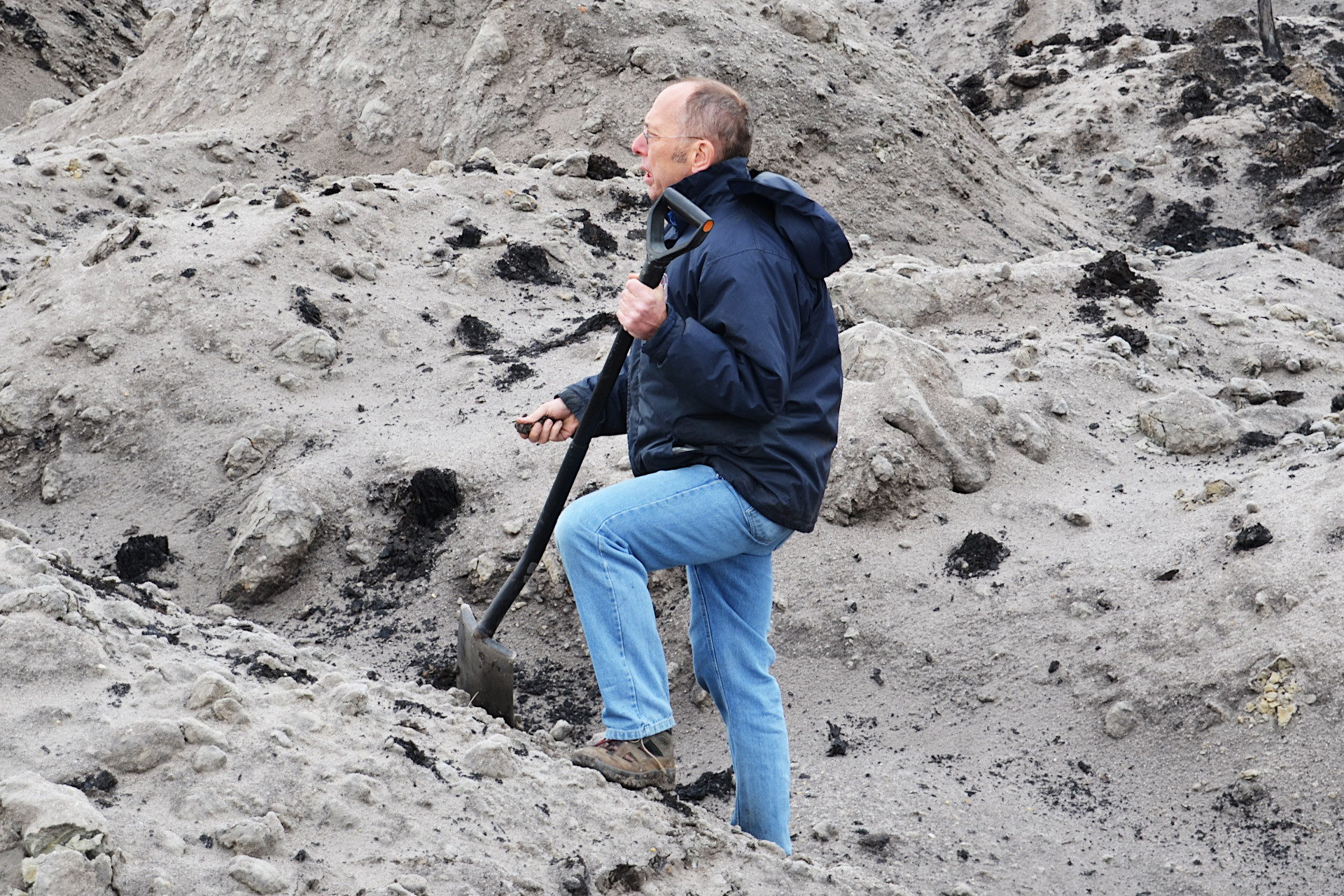
Soils

From “new ground” to productive soils
Soils are a basis of life on earth. However, industrial raw material extraction in landscape dimension and other human impacts threaten the natural resource. Over 10.000 years (since the post-glacial period) developed natural soil properties and essential functions get lost in short time, sometimes in one day and very often irreversible. However, scheduled reclamation measures can restore “new soils” and ecosystems in the long run. The major focus lies on a fast humus accumulation, revitalisation and stabilisation of the initial soil structure. Moreover, the water storage plays a most important role for the development of raw into fertile, higher-yielding agricultural and forest land.
In this field of action FIB e.V. deals inter alia with the further development of mineral fertilisation recommendations to secure a site-adapted crop rotation and plant growth. Another main research topic are innovative humus fertilisers, so-called soil improvers, especially on the basis of refined lignite, biochar and biochar substrates. Such additives are incorporated in the topsoil of sandy and unfertile sites to improve the water and nutrient storage capacity but also to activate biological nutrient cycling.

A core area of the research work of the FIB e.V. is therefore concerned with the further development of fertilisation recommendations in interaction with already established topping crop rotations, which are geared to the diversity of tipping substrates, and their long-term effects on chemical and physical soil properties. Also under consideration is the use of novel humus fertilisers, so-called soil conditioners, based on refined lignite, biochar and biochar substrates to improve the nutrient and water storage capacity of the predominantly sandy and infertile new land soils.
